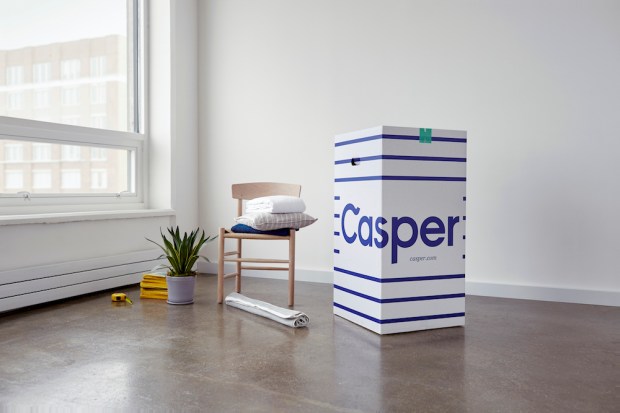The Competition In Selling A Good Night’s Sleep

Americans could stand to get a few more hours of rest each night. According to the CDC, about one-third of all Americans between the ages of 18–70 are not getting the recommended 7–8 hours of sleep a night — or, in a lot of cases, even getting close to it.
“As a nation, we are not getting enough sleep,” Wayne Giles, MD, director of CDC’s Division of Population Health, said in the study, before noting that Americans need to change their lifestyles (going to bed at the same time each night, rising at the same time each morning and turning off or removing televisions, computers, mobile devices, etc) if they ever hope to face their days bright-eyed and bushy-tailed.
Next-day grogginess is far from the worst consequence of being insufficiently well-rested. Sleeping less than seven hours per day is associated with an increased risk of developing chronic conditions, such as obesity, diabetes, high blood pressure, heart disease, stroke and frequent mental distress.
Sleep in the U.S. needs help.
It’s, perhaps, unsurprising that a wide range of internet-based mattress sellers have decided to help Americans get a better night’s sleep. Because not only is there a clear and present need, buying a mattress from a mattress salesman with their high-pressure tactics and complicated jargon about springs is not an appealing process for most consumers.
Having just come off celebrating their fourth birthday as a firm, the team at Casper recalls that being able to sell mattresses digitally was far from a foregone conclusion. There were problems in the $7 billion industry — markups could go as high as 100 percent because the playing field was dominated by a handful of highly consolidated manufacturers and retailers. And no one liked the shopping process. All of those things made Casper seem like an ideal candidate for digital disruption — Warby Parker-style.
Unlike glasses, which are small and easy to test-drive at home, a mattress is the kind of thing a consumer wants to try out in a showroom before committing to sleep on it every night for the next decade or so.
On its first day (April 22, 2014), Casper learned this conventional wisdom was not right. Launching with just a single foam mattress in twin, full, queen and king sizes, the firm began by thinking small. Then it quickly reset its expectations.
“Something like $1.8 million in sales in our first 18 months,” said Casper Co-Founder and CEO Philip Krim of the firm’s year-one goals on launch day. “But then, literally on launch day, we began to totally rethink everything.”
In fairness, the Casper founding team had actually been doing a lot of rethinking prior to launch day — though it was mostly about mattresses themselves and the various ways in which they could be much, much better.
“After eight months of testing hundreds of mattress types,” Co-Founder and COO Neil Parikh told Inc, “we learned that people need similar things, like back support, so we decided to make one mattress. Memory foam is super supportive, but it gets hot and it’s not very bouncy, so we added a layer of open-cell latex foam, which keeps you cool and adds just the right bounce.”
They also spent a lot of time rethinking shipping — as two of the Co-Founders, Parikh and Luke Sherwin, Casper’s chief creative officer, were sharing a 4th-story walk-up at the time — and quickly realized they needed to so something different with the shape and shipping of mattresses, since their bulk made them ungainly, particularly for urban millennials navigating narrow stairwells.
“We said, ‘What if we could compress a mattress to fit into a box the size of a dorm refrigerator? This way, we can deliver it via UPS so it costs us a 10th of the price to ship. Plus, people can test the mattress in their homes,’” Parikh said.
That was an early innovation of Casper — 100 days to try a mattress at home — and the free pick-up (no questions asked) if it did’t work out. The model is highly imitiated today, Parikh said, but was largely unheard of at Casper’s launch four years ago.
Once the mattresses started shipping, it became clear the market was ready for Casper. That $1.8 million goal they set for their first year in business was cleared within 60 days, and the startup spent the rest of that year scrambling to keep up with demand that rolled in at a much faster rate than they were ever expecting.
But catch up they did. Casper did an estimated $200 million in sales in 2016 and expanded its product line to include pillows, sheets, duvets, box springs and even a mattress for dogs. It had to expand, as it is no longer the only player in the game, and lots of startups are racing to be the millennial generation’s “mattress in a box.” Casper has continued its aggressive push by partnering with West Elm, where the company’s mattresses are now located in West Elm’s 70+ brick-and-mortar locations across the United States. Earlier this year, Casper opened its first location in New York City after almost a year of experimenting with pop-up shops in urban centers nationwide.
Along with those pop-ups, the company has also experimented with trucks that contain four napping pods dubbed “Napmobiles” that gave customers an opportunity to try out the company’s mattresses. To help customers sleep, the pods came with prerecorded bedtime stories as well as privacy blinds.
The firm has attracted attention from some big names. Stories circulated about a year ago that Target was interesting in buying Casper for $1 billion. Those talks did not materialize into a sale, but they did turn into a $75 million investment in Casper, care of Target.
“The strategic partnership offers Casper access to an established retail brand and gives Target an opportunity to work with a future-focused digital brand that is exploring an area that is meaningful for our guests — sleep and wellness. We’re looking forward to exploring the future together,” Target noted of its new relationship with the company.
And while Casper continues to fight off players life Tuft & Needle and Purple and their similarly concieved businesses, the company is confident their original idea remains the strongest entrant in the field.
“We consider ourselves a tech company first. We’ve created software that lets us know exactly where our raw materials and mattress components are and how to forecast what and when to build,” Parikh said.
